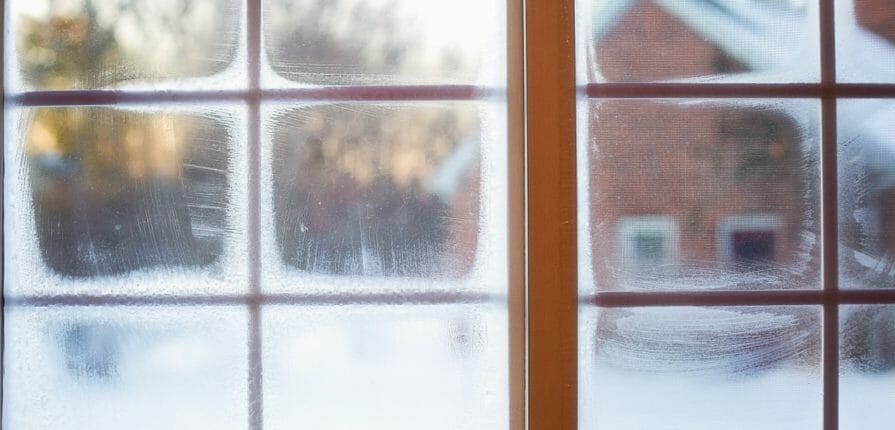How do I prepare my windows for winter?
Sealing windows for winter to keep the heat right where it belongs… inside!
Winter is coming and so is the Holiday season! To keep a warm family atmosphere at home, it is important to keep the heat inside. It might seem like an impossible mission if you have drafty windows, but if you don’t do anything, all that will happen is your energy bills will go up while the temperature in your home goes down.
There are different ways you can handle this problem and avoid winter becoming an unwanted houseguest. Over the years, experts and amateurs have all worked to find a solution that will not break their bank, that is not time-consuming, and that provides noticeable results quickly.
The most common questions that come to mind when resolving these issues are usually along these lines: What can I put on my windows to keep the cold out? How do I keep my utility bills low while keeping my holiday spirit high? To answer these questions, we explored some of the most popular methods of sealing windows and protecting your home from cold air finding its way inside.
Sealing windows for winter: Does putting plastic over windows really help?
One of the most popular DIY solutions is putting plastic window covers up for winter. It is easy to find these sheets of plastic. You can purchase them at any hardware store and they do a decent job of insulating winter windows. Just find a suitable video explanation on YouTube and you are ready to go.
There are a few downsides to the plastic wrap method, though.
Sealing your windows is a very time-consuming venture, and you will probably need help to get things done in a timely manner. If you have a lot of windows to cover, it can take days to make the preparations.
Thus, this type of winter window insulation presents a cheap and effective way for winter window insulation because it will keep the heat in. But it is still just thin plastic and you will need to keep it intact for the whole season.
One little puncture and you have to start again. So if you want a simple and effective way to keep the heat in and you can absolutely guarantee that no one will get anywhere close to the window — window plastic for winter should be your choice. But there are other options.
Does bubble wrap insulate windows?
Believe it or not, bubble wrap is not just an amazing stress reliever. It can help you reduce your utility bill by as much as half. That’s a pretty decent stress relief for all your senses. If you do a search for “How to insulate my windows cheaply” — bubble wrap is always among the most popular results.
How do you winterize a single pane window?
For single-pane windows, bubble wrap has shown amazing results, reducing heat loss by about 50%. It works better on single pane than double pane windows, but it still showed about 20% less heat loss on double panes. It is a cheap way to increase energy efficiency during the heating season.
Installation is always easy:
- Find bubble wrap with medium or large bubbles.
- With scissors, adjust the size of bubble wrap to the shape and size of your window.
- Spray window film over the window.
- Press the bubble wrap.
…and that is it!
This method is efficient and reduces your bills but there are some serious downsides — it will also reduce your view. Just imagine that amazing, snowy winter scenery outside. Snow shining under the moonlight, Christmas lights glowing, and you can’t enjoy it because your view is blurry.
Another downside is that you need to remove the bubble wrap in spring or the plastic may start degrading. So this method is efficient but temporary and not so much an eco-friendly solution for sealing windows for winter.
Condensation issues and humidity problem solution
You’ve probably faced this issue before — condensation occurs when the hot and humid air clashes with dry and cooler air. This results in sweaty and foggy windows. This problem is pretty annoying and the solution lies in controlling the indoor humidity levels.
Open the windows or doors daily to prevent condensation on windows in winter. But is it good to open your windows in the winter? Not really, but it will help with controlling high humidity. And if you’ve sealed your windows with plastic, opening them might not even be an option in the first place. That means you’ll have to pick up exhaust fans or dehumidifiers, which means even more costs adding up.
So how can I insulate my windows for winter?
We’ve seen some proven methods for keeping the heat in, reducing your utility bills, preventing the condensation and we’ve seen their downsides.
Of course, there is a solution for these problems that lets you avoid hard work and have a crystal clear look at all the wonderful winter scenery without the blurry bubble wrap or foggy windows.
Climate seal thermal series is acrylic glazing, with a 10-year guarantee against clouding. It is a lightweight, eco-friendly thermal barrier for your windows. Once mounted you do not have to worry about changing it when the next season comes. It will not deteriorate like plastic materials or cause molding.
You will prevent condensation, your bills will be lower and your property value will be increased with your new invisible ally working some serious weatherization magic.
Once the Climate Seal window inserts are installed you can grab your hot chocolate, enjoy the holiday cheer, and gaze out at the crystal clear view in your warm home.
Consult us today and we can find the right solution for you!

